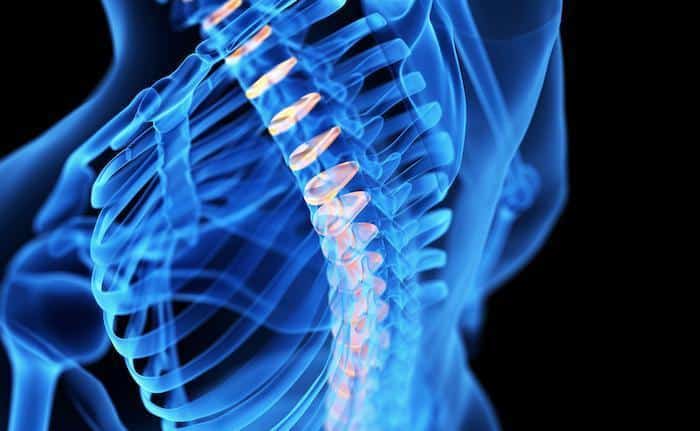Your spine is an essential component of your body. It’s made up of bones, muscles, nerves, and other structures that help protect your spinal cord and give your body shape. However, when the spinal canal begins to narrow, it leads to a number of issues, including spinal stenosis.
Spinal stenosis causes a number of issues, including nerve compression and chronic pain. There are, however, plenty of treatment options to help alleviate the pain of this condition.
At Kellogg Brain and Spine, our team are experts in pain that involves your back and spine. If you’re dealing with uncomfortable pain, Dr. Jordi X. Kellogg has the knowledge and experience to give you an accurate diagnosis and treatment plan.
What is spinal stenosis?
Spinal stenosis is a condition that leads to the narrowing of the spaces in your spine. Your spinal cord is housed in the middle of your spine, protected by vertebrae, spongy intervertebral discs, and nerves.
When the spaces in your spine narrow, it causes pressure on nerves and your spinal cord. This often leads to a variety of uncomfortable symptoms that continue to worsen as the disease progresses.
Any part of your spine can be affected by spinal stenosis, especially the area around your neck and low back. Although it can happen to anyone, this condition is more common in adults over the age of 50.
A lot of conditions lead to spinal stenosis. Sometimes, you’re born with a congenitally small spinal canal, which causes spinal stenosis at a younger age. Herniated or bulging discs may also cause this condition.
Understanding the symptoms
The narrowing of the spaces in your spine often puts pressure on different tissues, including the nerve roots. Depending on where the stenosis is located, it can lead to a variety of symptoms, including:
- Low back pain that comes and goes
- Aching or tenderness in the back
- Sciatic nerve pain
- Numbness or tingling in your legs or feet
- Pain that gets worse with standing
- Weakness in your lower extremities
If your spinal stenosis affects your neck, you may experience neck pain, numbness or tingling in your arms, or problems with your balance.
Your symptoms typically deteriorate as the spinal stenosis gets worse. In severe cases of the condition, you may experience loss of your bowel or bladder control.
What are the treatment options?
When you’re experiencing symptoms of spinal stenosis or back pain, it’s important to see Dr. Kellogg as soon as possible. The longer the condition goes without treatment, the worse your symptoms get.
If Dr. Kellogg determines you’re dealing with spinal stenosis, he recommends a number of different treatments, ranging from conservative measures to surgical repair. Here are a few of the common treatments for this condition:
Medications
In mild-to-moderate cases of spinal stenosis, medications may help relieve your pain. Dr. Kellogg recommends anti-inflammatory medications, prescription pain medications, and antidepressants to treat the symptoms of spinal stenosis.
Steroid injections
Corticosteroids are strong anti-inflammatory medications. Dr. Kellogg uses these medications to reduce the inflammation around the nerves in your spinal canal. He uses state-of-the-art imaging to ensure the injection goes into the right area in your spine.
Physical therapy
Physical therapy is a great tool to help you when you have spinal stenosis. This form of therapy aims to improve the mobility in your spine and increase your flexibility.
The exercises performed in physical therapy also build up your strength and maintain stability in your spine. Your balance is also improved during your sessions.
Surgery
When spinal stenosis is severe and the symptoms are interfering with your normal activities, Dr. Kellogg recommends surgery. Several different surgeries can help, depending on the root cause of your condition.
A lumbar fusion is a type of surgery that helps stabilize your spine by fusing two or more vertebrae. In some cases, Dr. Kellogg also performs a discectomy if a herniated disc is behind the narrowing of your spine.
Another type of surgery that Dr. Kellogg performs for spinal stenosis is a laminectomy. This procedure involves Dr. Kellogg taking off a small portion of the back of your vertebrae. This helps take excess pressure off the nerves in the area.
A foraminotomy is another type of surgery used to relieve the pain associated with spinal stenosis. This procedure is used for spinal stenosis that’s contained to one area and involves the removal of the bony opening in your vertebrae to relieve pressure on the nerves.
The treatment you need depends on the severity of your condition and how other therapies have worked to control your symptoms.
Don’t continue to let back pain rule your life. To schedule an appointment with Dr. Kellogg, call one of our offices in Portland or Wilsonville, Oregon, or request an appointment on our website.


